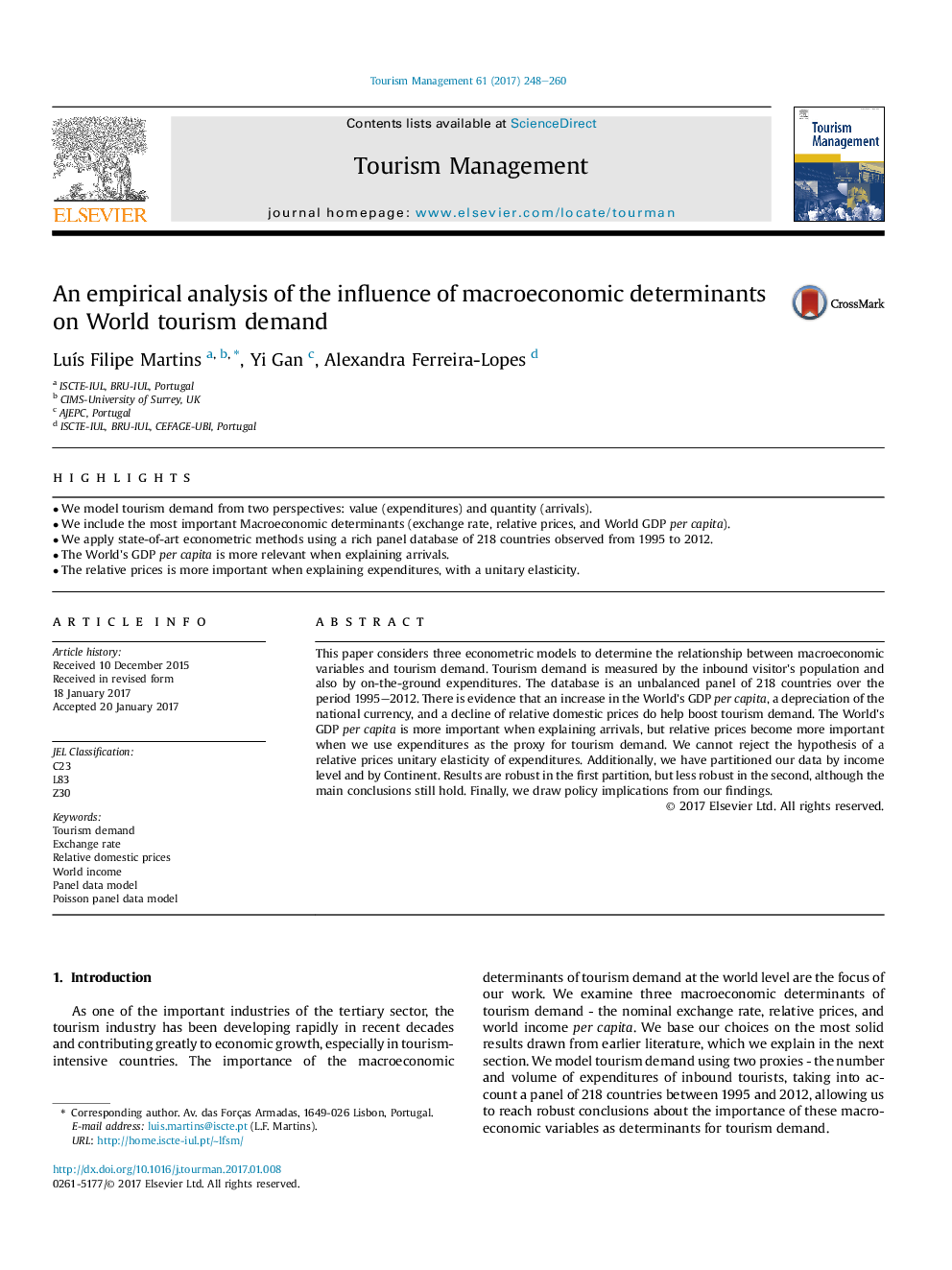| Article ID | Journal | Published Year | Pages | File Type |
|---|---|---|---|---|
| 5108493 | Tourism Management | 2017 | 13 Pages |
Abstract
This paper considers three econometric models to determine the relationship between macroeconomic variables and tourism demand. Tourism demand is measured by the inbound visitor's population and also by on-the-ground expenditures. The database is an unbalanced panel of 218 countries over the period 1995-2012. There is evidence that an increase in the World's GDP per capita, a depreciation of the national currency, and a decline of relative domestic prices do help boost tourism demand. The World's GDP per capita is more important when explaining arrivals, but relative prices become more important when we use expenditures as the proxy for tourism demand. We cannot reject the hypothesis of a relative prices unitary elasticity of expenditures. Additionally, we have partitioned our data by income level and by Continent. Results are robust in the first partition, but less robust in the second, although the main conclusions still hold. Finally, we draw policy implications from our findings.
Related Topics
Social Sciences and Humanities
Business, Management and Accounting
Strategy and Management
Authors
LuÃs Filipe Martins, Yi Gan, Alexandra Ferreira-Lopes,
